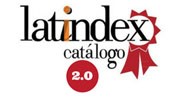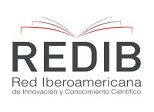Process of Elaboration of a Didactic Guide for Facilitators in Entrepreneurship
Keywords:
entrepreneurship; didactic guide; education for entrepreneurship.Abstract
Since 2012, the Pontifical Catholic University of Ecuador (PUCE) Esmeraldas, through its Entrepreneurship Unit, has collaborated with the Esmeralda society, encouraging initiatives of local entrepreneurship. Until now, different activities have been carried out with undertakings in the province, which have had a strong content of training, to equip them with technical tools. The increase in the number of enterprises to be trained, in the competitions and projects, gave rise to the need to make a qualitative leap in the applied teaching-learning methodology, through the elaboration of a didactic guide. Not being this a fully documented process, it was decided to describe the process of developing the educational guide for facilitators in entrepreneurship from the PUCE - Esmeraldas by means of a qualitative study, which was based on the documentary review of the reports of the projects implemented by the Unit of Entrepreneurship. A structured interview was applied to the director and the technician in charge of the guide, using the synthetic-analytical method to contrast the information obtained from the documentary sources and the experiences. The results obtained were the increase in the interest of the community in participating, as well as the demands of better tools for entrepreneurs. Finally, it is concluded that the guide has been the consequence of a process of interaction among technicians, facilitators and entrepreneurs who have participated in the process for 4 years.
References
Bannock, G. (1981). The Economics of Small Firms: Return to the Wildersness. Oxford: Basil Blackwell.
Bygrave, W., & Zacharakis, A. (2009). The portable MBA in entrepreneurship (Vol. 35). John Wilwy & Sons.
Carchi. (2012). Guía del Emprendimiento. Carchi, Ecuador: FBT. Cía Ltda. Recuperado de http://dspace.unach.edu.ec/bitstream/51000/3487/1/UNACH-EC-IPG-PYMES-2017-0012.pdf
Castillo, A. (1999). Estado del Arte en la Enseñanza del Emprendimiento. INTEC-CHILE, 5.
Centro Ecuatoriano para la Promoción y Acción de la Mujer - CEPAM. (2012). Manual de capacitación de emprendimientos productivos y culturales para grupos juveniles de Esmeraldas. Recuperado de http://www.fad.es/sites/default/files/Programa%20Emprendimientos%20Productivos%20Culturales.pdf
Centro Emprende (2002). Guía para emprendedores con futuro. Recuperado de:http://www.telecentros.info/pdfs/guia_emprendedores.pdf
Chávez E. C. (2017). Evaluación del proyecto de vinculación “Fomento a la cultura emprendedora en jóvenes de la provincia de Esmeraldas” Período 2015-2016. Tesis de ingeniería. Esmeraldas: Pontificia Universidad Católica del Ecuador Sede Esmeraldas, 2017, 94 pp.
European Commission: Enterprise and Industry. (2009). Entrepreneurship in vocational education and training. Recuperado de http://ec.europa.eu/enterprise/policies/sme/promoting-entrepreneurship/education-training-entrepreneurship/index_en.htm
Fantova, F. (1995). Tercer sector e intervención social. Madrid: Instituto Nacional de Empleo (INEM).
Fonseca, M. (2004). Guía del Emprendedor. Empresas Por La Paz: Convenio PG3-060 OIM – Confederación Colombiana de Cámaras de Comercio – Confecámaras. Recuperado de: http://repository.oim.org.co/bitstream/20.500.11788/732/1/COL-OIM%200079.pdf
Garavan, T., & O'Cinneide, B. (1994). “Entrepreneurship education and training programmes: a review and evaluation. Journal of European industrial training, 13-21.
García, I. y De la Cruz, M. (2014). Las guías didácticas: recursos necesarios para el aprendizaje autónomo. EDUMECENTRO, 6,3 (sept.-dic.), pp. 162-175.
García, L. (2009). La guía didáctica. Editorial del BENED. Recuperado de http://www.uned.es/catedraunesco- ead/editorial/p7-2-2009.pdf
Gibb, A. (1987). The Enterprise Culture and Education. Understanding Enterprise Culture. International Small Business Journal, April.
Gibb, A. (2002). In pursuir of a new "enterprise" and "entrepreseurship paradign for learning: creative destruction, new values, new ways of doing things and new combinations of knowledge. International Journal of Management Reviews, 4(3), 233-269.
Hansemark, O. C. (1998). The effects of an entrepreneurship programme on need for achievement and locus of control of reinforcement. International Journal of Entrepreneurial Behaviour & Research, 28-50.
Henry, C., Hill, F., & Leitch, C. (2005). Entrepreneurship education and training - can entrepreneurship be taught? Education and Training, 47(2), 98-111.
Hisrich, R., & Peters, M. (1998). Entrepreneurship (4th ed. ed.). Boston: Irwin McGraw-Hill.
Holguín, G. (2013). ¿Cómo emprender con éxito? Esmeraldas, Ecuador. Recuperado de file:///C:/Users/gloria.holguin/Downloads/HOLGUIN%20ALVARADO%20GLORIA%20Manual%20(1).pdf
Ibrahim y Soufani, 2002. (s.f.). Innovation and Entrepreneurship in Education. Pantelis M. Papadopoulos, Roland Burger, Ana Faria.
Jennings, P., & Hawley, D. (1996). Designing Effective Training Programmes, 19th ISBA National Small Firms Policy and Research Conference, Enterprising Futures, Birmingham.
Lizarazo Beltrán, María O (2009). Jóvenes emprendedores comprometidos con el desarrollo sostenible de los territorios rurales: guía para identificar y planificar negocios rurales con visión de responsabilidad social / IICA. Quito: IICA. Recuperado de: http://cenida.una.edu.ni/relectronicos/REE50L789.pdf
Martínez, C. (2000). Elaboración de materiales didácticos escritos para la educación a distancia. Enseñanza e Investigación en Psicología (Magazine/Journal). Consejo Nacional para el Enseñanza e Investigación en Psicología, 5 (January, 2000), pp.18-33.
Olivos, F., Álvarez, I., & Díaz, F. (2013). Impacto de la educación para el emprendimiento en la creatividad: Una experiencia en Chile con Propensity Score Matching. Revista Electrónica Educare, 260.
PUCESE, U. d. (2011). Incubadora de empresas. Recuperado de <http://emprendimientopucese.blogspot.com/>
Raven, G. (1983). Los clientes de Glen raven comparten sus conocimientos sobre las mejores prácticas. RAVEN Edicion num. 17.
Sánchez, J., Rivera, M., Krummenacher, R. (2013). Guía para el fomento de nuevos emprendimientos. Oficina de la Cooperación Suiza en América Central. Programa PyMerural. Recuperado de: http://doc.rero.ch/record/256551/files/06-Guia_para_el_fomento_de_nuevos_emprendimientos.pdf?version=1
Sánchez, A. y Saavedra, R. (2016). Haciendo negocios en el Ecuador. Recuperado de <http://emprendimientopucese.blogspot.com/>
Ulloa, R. (2000). La guía de estudio, función y construcción. En: Antología del taller. El material didáctico impreso. Su elaboración y producción. Dirección de Educación a Distancia. México: UAEM.
Varela, R., y Bedoya, O. (2006). Modelo conceptual de desarrollo empresarial basado en competencias. Estudios gerenciales, 22(100), 21-47.
World Bank Group. (2013). Framing the global landscape of entrepreneurship education and training programs. Washington, DC: Education Department, Human Development Network.
Downloads
Published
How to Cite
Issue
Section
License
Los artículos enviados a la Revista Científica Hallazgos21 deberán ser totalmente originales e inéditos.
Los autores son los responsables de los textos y las imágenes incluidas en los artículos y no necesariamente reflejan el pensamiento de la editorial o de la Pontificia Universidad Católica del Ecuador, Sede Esmeraldas (PUCESE).
Los autores disponen cederle a la Revista Científica Hallazgos21 todos los derechos inherentes para la edición, publicación y distribución o divulgación del mismo.
Se autoriza a las revistas firmantes de los acuerdos de Encuentros de Revistas Latinoamericanas para reproducir en parte o totalmente los artículos con la sola mención de la fuente claramente señalada.







